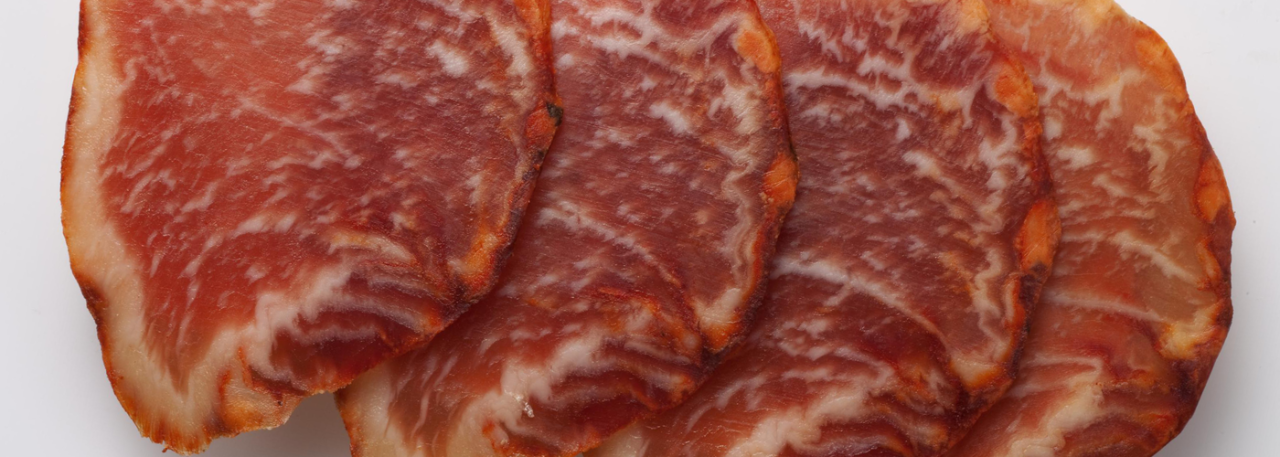.png.transform/rendition-xs/image_image%20(1).png)
Cured pork loin
Dried pork meat product made from whole pork loin with the fat removed, marinated (with salt, garlic and paprika), stuffed into a natural pork casing and cured. It is also known by other names such as lomo embuchado and lomo.
Tasting notes
Its taste is characterized by a delicate, slightly salty flavor, with a note of pimentón.
Other notes
It is elongated and measures about 65-75 cm. It can be recognized by its smooth, uniform, pinkish-red appearance on the outside and the darker coloring on the inside.
The white marbling is one of its distinctive features. In Extremadura it is common to use pimentón from La Vera, garlic, oregano, nutmeg, cloves, olive oil, white wine and sugar for the marinade. The name caña (meaning 'tube') is due to its straight, elongated shape. It is presented in the form of a cylinder, slightly flattened and with a lengthwise cleft. When sliced it reveals a fine white marbling, evenly distributed throughout the meat, the result of the amalgamation of fat during the curing period.
Production / Processing method
A portion of loin from a pig, cleaned of outer fat, is refrigerated at 0ºC for 24 hours. The meat is then cured with salt for 12-24 hours at 5ºC, washed and seasoned (in a paprika marinade) and left to stand for 24-48 hours.
At the end of this period it is stuffed into a natural pork or beef casing with a caliber of 50-60 mm. Then begins the curing process, lasting two months, at a temperature of 14ºC-15ºC and a relative humidity of 75%.
Geography / Relief and climate:
In Spain it is grown in areas where the Mediterranean influence previals over the continental climate.
The white marbling is one of its distinctive features.

